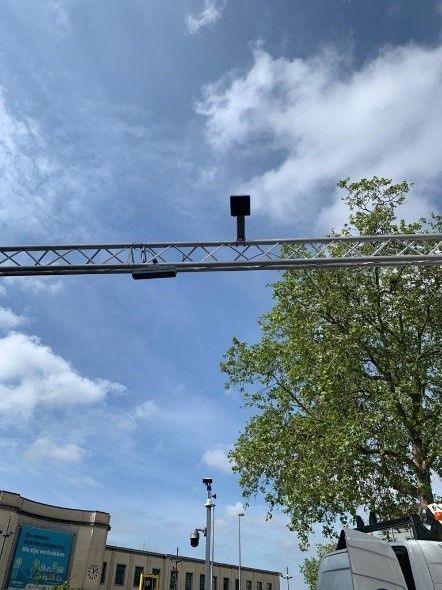by Scott Muniz | Jul 16, 2021 | Security, Technology
This article is contributed. See the original author and article here.
Cisco has released security updates to address a vulnerability in Adaptive Security Appliance Software Release 9.16.1 and Firepower Threat Defense Software Release 7.0.0. A remote attacker could exploit this vulnerability to cause a denial of service condition.
CISA encourages users and administrators to review Cisco Advisory cisco-sa-asa-ftd-ipsec-dos-TFKQbgWC and apply the necessary updates.
by Scott Muniz | Jul 16, 2021 | Security, Technology
This article is contributed. See the original author and article here.
Google has released Chrome version 91.0.4472.164 for Windows, Mac, and Linux. This version addresses vulnerabilities that an attacker could exploit to take control of an affected system. One of these vulnerabilities—CVE-2021-30563—has been detected in exploits in the wild.
CISA encourages users and administrators to review the Chrome Release Note and apply the necessary updates.
by Scott Muniz | Jul 15, 2021 | Security, Technology
This article is contributed. See the original author and article here.
CISA is aware of threat actors actively targeting a known, previously patched, vulnerability in SonicWall Secure Mobile Access (SMA) 100 series and Secure Remote Access (SRA) products running unpatched and end-of-life (EOL) 8.x firmware. Threat actors can exploit this vulnerability to initiate a targeted ransomware attack.
CISA encourages users and administrators to review the SonicWall security advisory and upgrade to the newest firmware or disconnect EOL appliances as soon as possible. Review the CISA Bad Practices webpage to learn more about bad cybersecurity practices, such as using EOL software, that are especially dangerous for organizations supporting designated Critical Infrastructure or National Critical Functions.

by Contributed | Jul 15, 2021 | Dynamics 365, Microsoft 365, Technology
This article is contributed. See the original author and article here.
Customer service organizations depend on incoming service requests getting to the appropriate agent to ensure high customer satisfaction. Improving routing for your organization can seem like a daunting task, but it is not something that needs to be tackled all at once. The new unified routing capabilities in Dynamics 365 Customer Service can help improve parts of your process without disruption to your overall organization.
The recent blog post Increase customer satisfaction and agent productivity with unified routing describes six benefits of unified routing for your organization. Thanks to the composability of the system, you can break down your approach and benefit from incremental improvements without having to completely overhaul your routing and assignment strategy all at once.
Where to start
The unified routing capability reimagines the routing pipeline into two broad stages: assignment and classification. Get started with your routing transformation by assessing your current system and business structure in both of those stages.
Assignment
How are your customer service agents structured? Do you have teams supporting different regions, priority cases, or languages? Is work assigned to agents based on their skills and specifications or on who has the most capacity? Your queue configuration and assignment strategy should be core to your business processes, and it can be hard to change. But this step can have the greatest impact on improving your core support KPIs.
If your organization is ready to completely adopt automated, skills-based assignments, start by building your ideal queue structure, assign the skills and agents, and ensure your workstream rules update the incoming work items with those corresponding skills. If your organization is starting incrementally, identify a smaller group of agents and a subset of work items, and start a pilot program using one workstream (such as live chat or email) and one queue. The rest of the organization can continue to work as they are today, and the pilot will provide insight into what it would take for your organization to fully migrate.
Classification
What about the cases, emails, conversations, or other incoming service requests your organization needs to route and distribute? How often do these items include all the information required to get to the appropriate agent? Do you have manual or automated steps to look up related data or extract key concepts before it can be routed? The classification stage in unified routing provides configuration and machine learning rules to help organizations ensure the work item has all the necessary details to route it to the right agent or queue.
If your organization is ready to completely adopt this stage, start by examining your existing process for steps that update the work item either manually or through a plug-in, and translate it into a classification rule. If your organization is looking to start small, identify a subset of the work items or maybe a new set of work items not being routed today such as email, and start a pilot using one workstream and one queue. Once again, the rest of the organization can continue to work as they are currently, and the pilot will provide insight into what it would take for your organization to fully use these capabilities.
Increased visibility
Maybe your current system is working well for your agent structure and the incoming work items. But do you have the visibility into the system to understand what’s going well and what needs to be improved? Unified routing provides diagnostics for any item routed, showing you clearly which rules were evaluated, what the results were, and how it was ultimately assigned to the agent. Continued monitoring will provide insight into how your routing rules are running and highlight areas in both workstream and queue configurations that should be reviewed.
How to get started
If you’re a current customer of Dynamics 365 Customer Service, you can enable unified routing in your organization to start streamlining your routing and assignments. You may already be leveraging the routing rulesets, which can still be used alongside the new unified routing workstreams. By crafting intake rules you can determine which cases and work items go through the unified routing engine and which are still processed by your existing routing rules. Don’t forget to use diagnostics to track a work item through your newly configured classification and assignment rules.
If you’re a current customer of chat or digital messaging for Dynamics 365 Customer Service, the good news is you’re already using the improved assignment capabilities. After migrating your workstreams to the new Omnichannel admin center app, you’ll be able to use the new classification capabilities as well.
If you’re not yet a customer of Dynamics 365 Customer Service, head over to Dynamics365.com to connect with a partner or start your own trial.
The post How to approach your routing and assignment transformation with unified routing appeared first on Microsoft Dynamics 365 Blog.
Brought to you by Dr. Ware, Microsoft Office 365 Silver Partner, Charleston SC.

by Contributed | Jul 15, 2021 | Technology
This article is contributed. See the original author and article here.

Cities range from the large to the small, the old to the new, and the well-known to the hardly-ever-heard-of, but the one thing they have in common is an appetite to meet the needs of their population. Smart cities are hubs of cutting-edge technology that help make municipalities work better for everyone, from giving residents better lives to enabling thriving businesses.
Smart cities are reshaping global economics, the relationship of people to their physical spaces, and the needs for new talent, skills, and attitudes to embrace the future. By leveraging cloud and edge computing powered by 5G (and LPWA, or Low Power Wireless Access), cities have new opportunities to engage residents, increase safety, and promote efficient operations at low-cost. The use of this advanced technology, including the intelligent edge, artificial intelligence (AI) and 5G, will truly transform how we live, work, and develop new applications and solutions through collaborations across government and industries.
Proximus + Microsoft deliver on Kortrijk’s vision as a smart city

Kortrijk is a smart city in Belgium that used technology to access pedestrian count to promote safety during the COVID-19 pandemic. For a city, knowing the number of people on the streets in relation to a venues’ capacity is an important element to consider when looking for innovative ways to make the municipalities safer. Beyond the pandemic, though, learning how people move in a particular area can have a great impact on a city’s activities, so having the right tools to access this data can lead to smoother operations and better engagement.
Using edge AI and IoT technology to quickly solve for city challenges
Kortrijk originally relied on webcam barometric pressure readings to gather pedestrian counts, but after several tests, it became clear that live counts were not accurate, prompting city officials to look for alternative solutions. After exploring the market for a suitable solution, Proximus, one of the largest mobile telecommunications companies in Belgium, turned to Azure Percept to propose new alternatives to Kortrijk.
Azure Percept is a comprehensive end-to-end edge AI platform with pre-built models and solution management, as well as Zero Trust security measures, to safeguard models and data. It offers the capabilities to start a proof of concept in minutes with hardware accelerators designed to integrate seamlessly with Azure AI and Azure IoT services.
With this, Microsoft partnered with Proximus, which is the leading telecom provider in Belgium, to develop an innovative, proof of concept solution that leverages Proximus’s cellular network to address the live-count limitations the city had encountered with previous technologies. The strategy was to set-up a test system which included:
- Video analysis for pedestrian count
- Video analysis with 3D cameras
- Point cloud analysis relying on millimeter wave radars
- Sound analysis based on sound sensors powered by AI
Sensors were placed in key locations and tests , which did not require an initial investment from the city, were conducted in late May. By leveraging Azure Cognitive Services and ML, Proximus was able to deliver vision and audio insights in real time. The results served to decide which model was best suited for the city by estimating the ideal technology and placement options to obtain optimal pedestrian counts—becoming one of the first operators in Europe to directly integrate Microsoft edge capabilities into the heart of its network.
Intelligent edge for smart cities

Innovation does not come without challenges though. With new applications, services, and workloads, smart cities need solutions and architecture built to support their demands. Enter the intelligent edge, a continually expanding set of connected systems and devices that gather and analyze data. Users get real-time insights and experiences, delivered by highly responsive and contextually aware apps, and when combined with the limitless computing power of the cloud, the possibilities for innovation are endless.
Bringing enterprise applications closer to data sources, such as IoT devices or local edge servers, results in faster insights, improved response times, and better bandwidth availability. Cloud flexibility and scalability allows for easy integration and deployment, and with low maintenance costs, processes can be managed centrally while still allowing deployment of software depending on the user’s needs—resulting in accelerated value, reduced operating costs, and increased efficiency. With this, smart cities can invent and innovate to meet the demands of the future.
The 5G power wave—fueling edge computing
The importance of 5G and LPWA stems from its potential to accelerate value and improve efficiency as it provides a new set of latencies and features that did not exist in the 4G environment and previous generations. This is particularly relevant in smart cities where the convergence of industry, public service, and other enterprises requires high density, speed and bandwidth and low power networks that—when paired with technology—opens a new world of possibilities.
For Kortrijk and other cities, this powerful combination offers accurate insights as well as fast and cost-efficient solutions to address their particular needs. The data gathered through computer vision—which detects objects and movement in real-time—is robust and configurable to support different scenarios, allowing city officials to evaluate their options and make decisions that lead to optimal solutions.
Full throttle toward 5G and smart cities

Thanks to advanced technology like the intelligent edge, AI, and 5G, we have the power to make smart cities a reality more easily. More and more cities around the world are welcoming this approach and solutions are being created and deployed to address the most pressing concerns that decision makers face every day.
Azure Percept, along with the entire portfolio of Azure services for smart cities, is designed to speed the development and deployment of secure and comprehensive edge AI solutions from partners like Proximus that can leverage a range of edge endpoints – cameras, gateways, environmental sensors, all leveraging telecom infrastructure including 5G and LPWA.
Ultimately, the goal is to create fully integrated smart processes that use data, technology and creativity to shape how people and goods move—making smart cities not only innovative but also safer and more reliable to support economic growth and meet the challenges of the future.
Learn more about Azure Percept.







Recent Comments